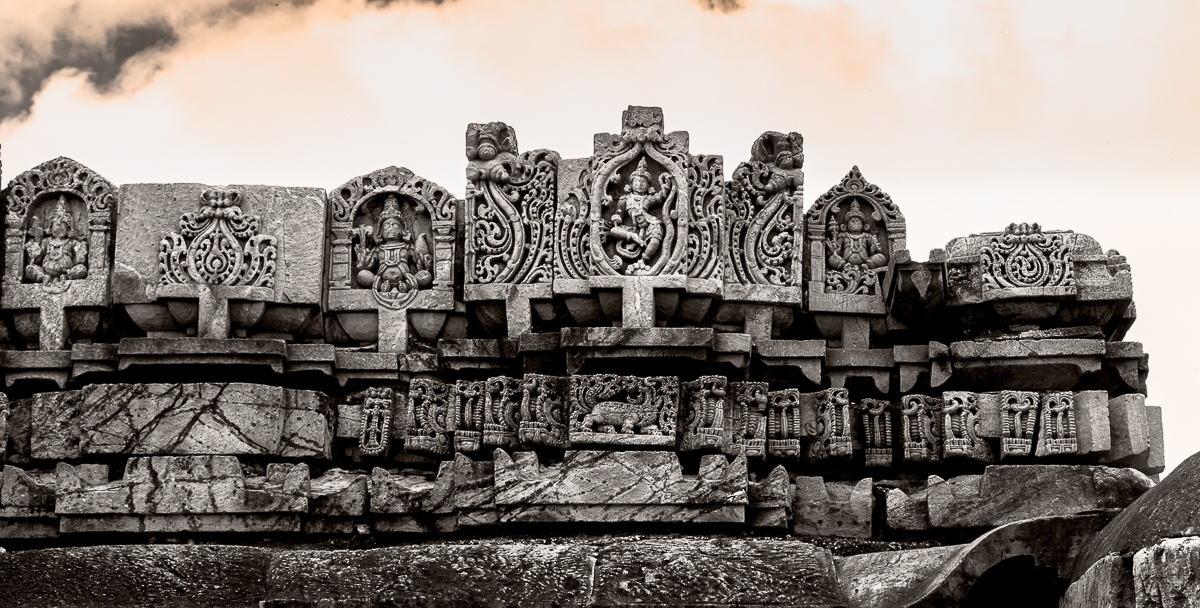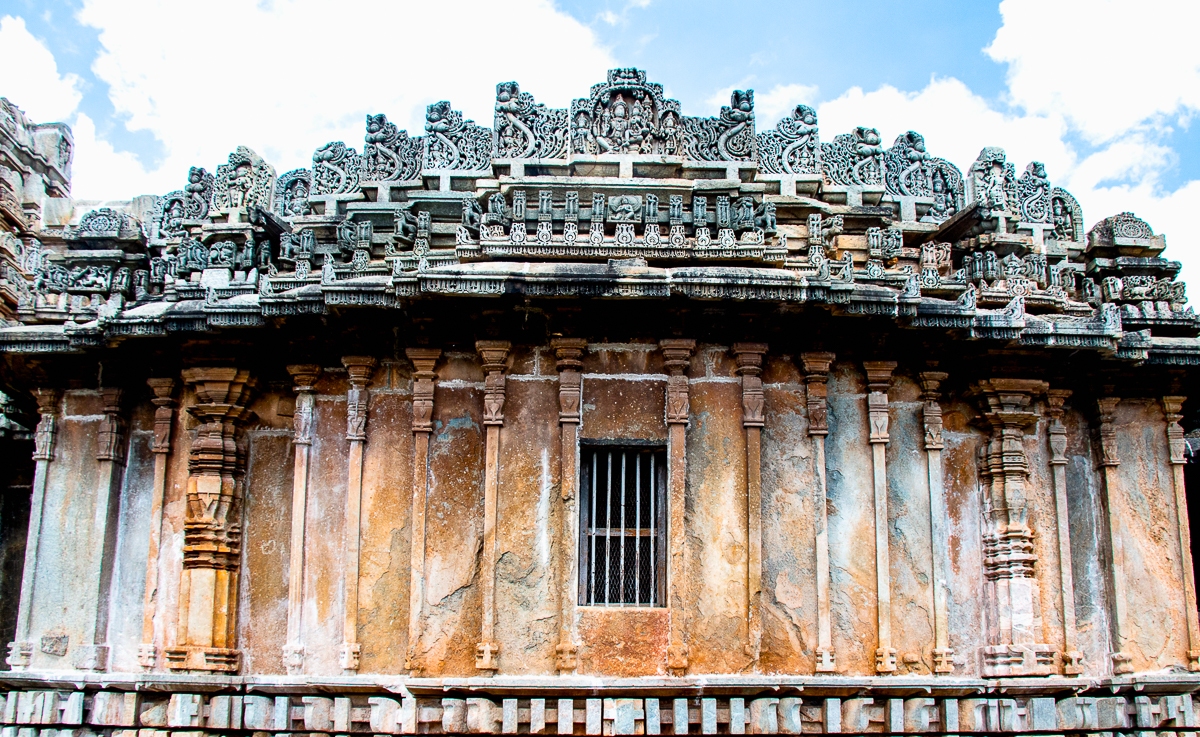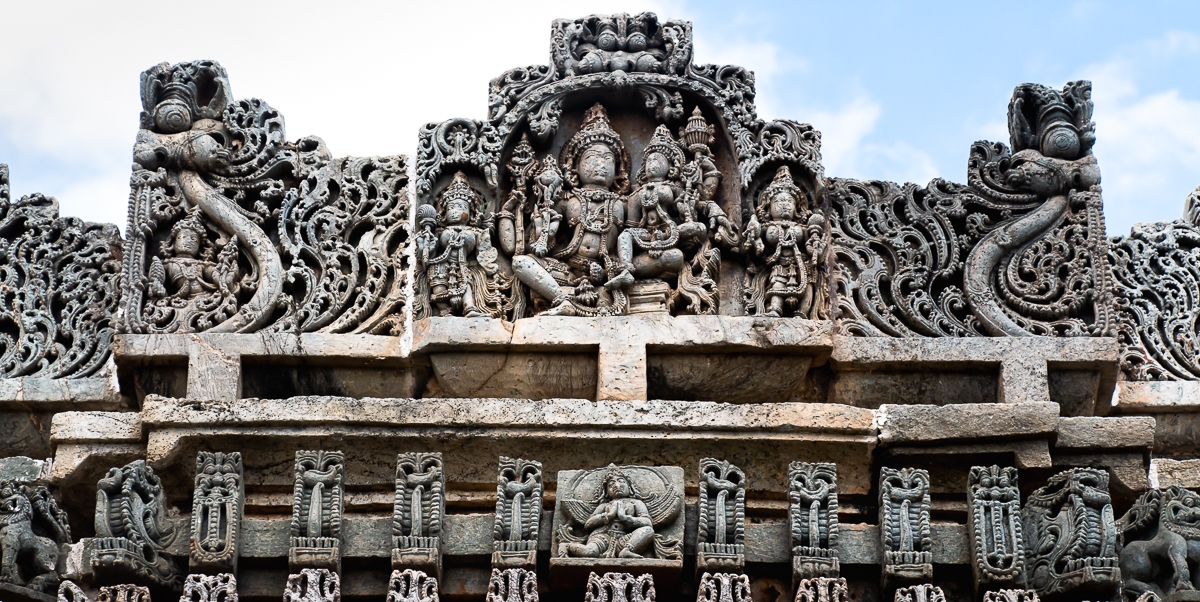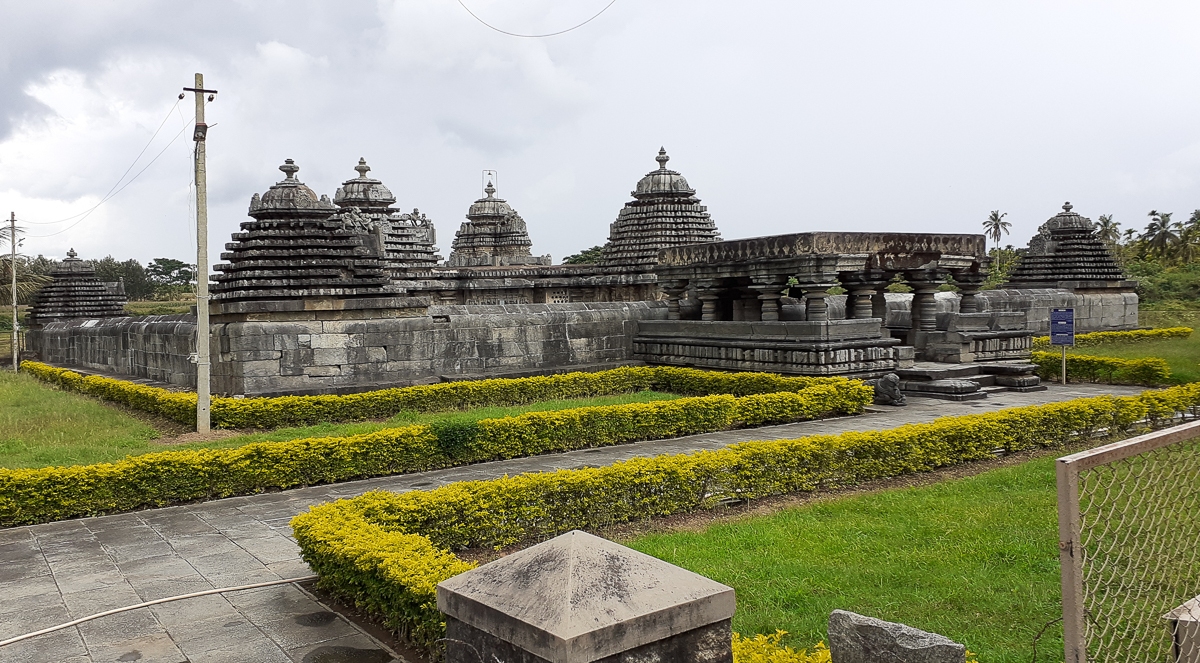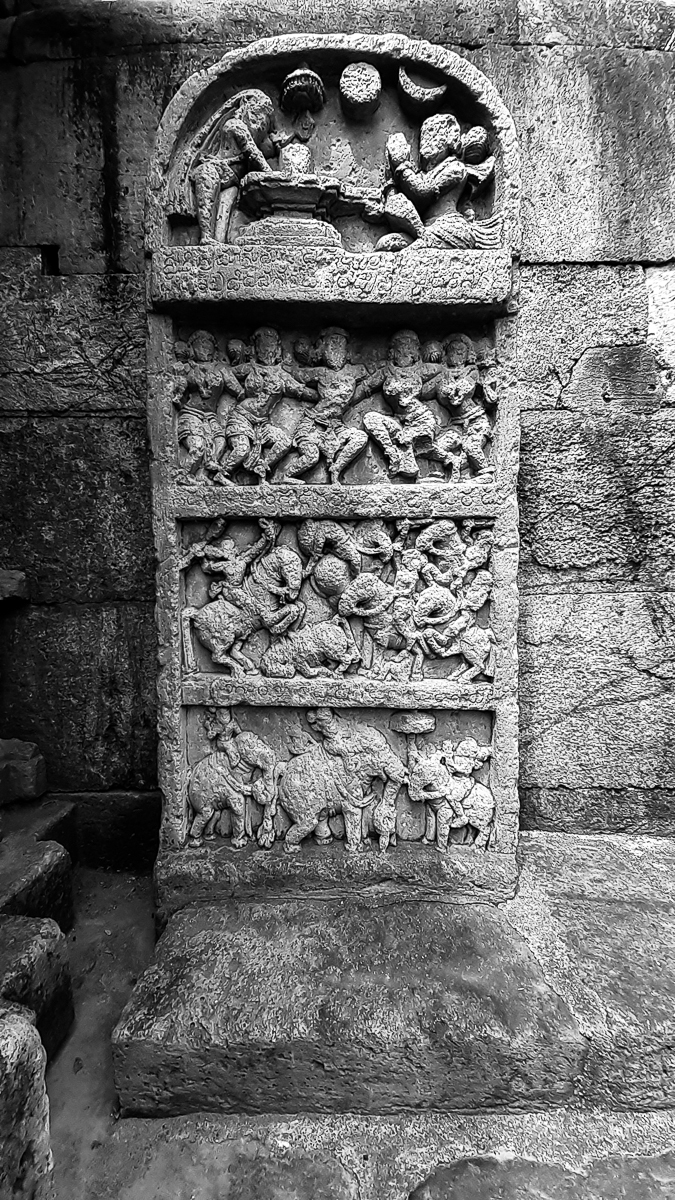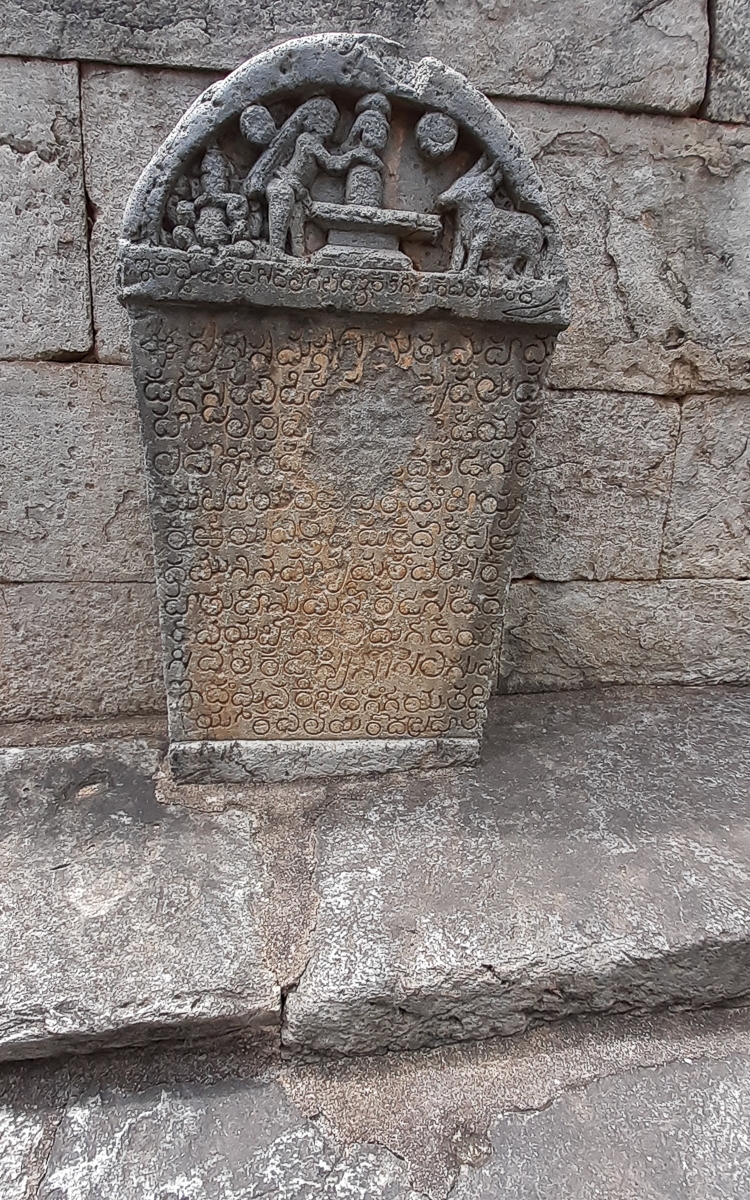The Hoysalas were one of the six prominent dynasties that ruled over the region that make up the present state of Karnataka (the other five being the Chalukyas of Badami, Rashtrakutas of Manyakheta, Western Chalukyas of Basava Kalyan, the Vijayanagara kingdom and the Wodeyars of Mysore). At the pinnacle of their power, the Hoysalas had complete supremacy over both the Western Ghats as well as the Deccan plateau region of Karnataka.
Hoysala Architecture
It is for their contribution in the field of art and architecture that the Hoysalas are most remembered. More than a hundred different temples constructed by the Hoysala rulers, their ministers and prominent courtiers are spread across Western and South-Western Karnataka. Each of these temples are a marvel of 10th-12th century workmanship, and offer a stunning insight into the skill and artisanship our forefathers had.
Vesara Style
Hindu temples across the North and South have traditionally followed different architecture styles. In the North, the Nagara style flourished, while in the South it was the Dravidian style. In the Deccan region, under the patronage of the Chalukyas and the Hoysalas, a new style of temple architecture evolved. This style, called Vesara, incorporated features from both the Nagara as well as the Dravidian style.
| Nagara | Dravidian | Vesara |
|---|---|---|
| Have curvilinear tower called Shikhara above Garbhagriha (Garbhagriha is where the deity is placed) | Pyramid shaped tower called Vimana over the Garbhagriha | Pyramid shaped tower, but smaller in height than a typical Vimana |
| No compound wall around the temple | Compound wall present around the temple | Was mostly present |
| Multiple Shikharas could be present in the main temple | Only one predominant Vimana. Any subsidiary shrines were kept away from main temple structure | Multiple shrines and hence multiple Vimana could be present in the main temple |
| No Gopuram (entrance gateway) | Gopuram at the entrance of the temple | Gopurams were optional, although all big temples had one |
| E.g. Dashavatara Temple, Deogarh | E.g. Brihadeeswara Temple, Tanjavur | E.g. Chennakeshava temple, Belur |
Important Hoysala Temples
The three prominent (and most visited) Hoysala temples are:
- Chennakeshava Temple, Belur (Belur being the original capital of the Hoysalas)
- Hoysaleshwara Temple, Halebidu (Halebidu being the city to where the Hoysala capital was later moved)
- Chennakeshava Temple, Somanathapura (near Mysore)
While these three are embellished with intricate carvings and are truly astounding, there are a hundred other temples, each with its own story to tell. Two such are the Veeranarayana Temple at Belavadi and the Lakshmi Temple at Doddagaddavalli, both of which are famous for their architecture.
Veeranarayana Temple, Belavadi
Note: The picture gallery is best viewed on a laptop/desktop/tablet
Lakshmi Temple, Doddagaddavalli
Note: The picture gallery is best viewed on a laptop/desktop/tablet
Getting There
While Belavadi is close to the coffee town of Chikamagaluru, Doddagaddavalli is close to Hassan. Both places are easily reachable from Bengaluru. Belur and Halebidu are also close by, so a visitor could really combine visiting all these temples over a couple of days.
| Did you know… |
|---|
| The Vesara style of architecture is also known as Hybrid Style since it incorporates both Dravidian and Nagara styles in it. The word Vesara in Sanskrit means ‘mule’. |
Both the Veeranarayana and Lakshmi temples are under the Archaeological Survey of India and appear to be well maintained. There are no guides though, so do your reading research before visiting. Photography is not allowed inside either temples. At Doddagaddavalli there is a caretaker who doubles up as guide and can give you a quick introduction to the place.




